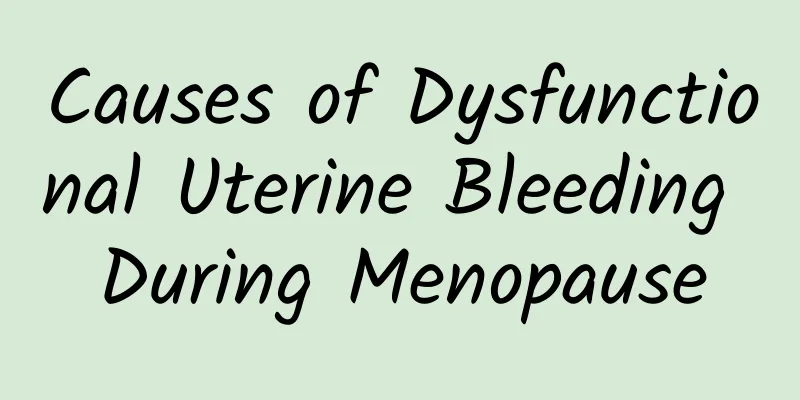Causes of Dysfunctional Uterine Bleeding During Menopause

|
Dysfunctional uterine bleeding, referred to as "dysfunctional uterine bleeding", is a common gynecological disease. Women with menopausal functional uterine bleeding present with irregular uterine bleeding, irregular menstrual cycles, varying lengths of menstrual periods, varying amounts of bleeding, sometimes bleeding for several months, and anemia. The basal body temperature is monophasic, and the vaginal exfoliated cells are mainly bottom-layer cells, or middle and lower-layer cells. Cervical mucus crystals are poorly developed fern-shaped, and the endometrium is cystic hyperplasia or glandular hyperplasia. In blood endocrine examinations, the pituitary gland secretes elevated follicle-stimulating hormone, etc. After women enter menopause, their ovarian function begins to decline, the hormone level of the ovaries decreases, and the feedback function to the hypothalamus and pituitary gland is lost, causing the gonadotropin secreted by the pituitary gland to increase to varying degrees. Although the remaining follicles in the ovaries also develop, they do not ovulate. Under the long-term effect of estrogen, the endometrial glands show a continuous hyperplasia reaction, which can cause mild hyperplasia, adenocystic hyperplasia, or adenomatous hyperplasia. When the estrogen level fluctuates greatly, the endometrium will shed incompletely, causing irregular uterine bleeding. Traditional Chinese medicine believes that women's menstrual period is exhausted after 79 days, kidney qi is weak, and Chong and Ren meridians are weak, with kidney deficiency as the main cause. As menopausal women's kidney qi gradually declines, their organs lose function, and their spleen qi is weak, they often have no power to control and cause metrorrhagia. Therefore, menopausal functional uterine bleeding is more often manifested by the spleen failing to control blood type, such as sudden or continuous bleeding, pale color and thin blood, fatigue and shortness of breath, pale complexion, swollen eyelids, pale and fat tongue, and weak pulse. Treatment should be to invigorate qi and strengthen spleen, and consolidate Chong and Ren meridians. |
>>: Treatment of menopausal functional uterine bleeding based on TCM classification
Recommend
What age do uterine fibroids usually occur? What age range do uterine fibroids occur?
What age do uterine fibroids usually occur? What ...
Women should pay attention to the factors that cause uterine fibroids
Uterine fibroids are very common in our lives. Th...
What will happen if vulvar leukoplakia lasts a long time?
If vulvar leukoplakia persists for a long time, i...
Abnormal leucorrhea is one of the main symptoms of cervical hypertrophy
Because young people nowadays do not pay attentio...
What are the factors of cervical erosion?
Cervical erosion is one of the local characterist...
Causes of endometrial thickening
Endometrial thickening is a disease that is more ...
What to eat for pelvic inflammatory disease?
What to eat for pelvic inflammatory disease? Pelv...
Eat more green bananas to lose weight? Be careful not to aggravate constipation
Can eating unripe green bananas help you lose wei...
How to treat ovarian cysts complicated by polycystic ovary syndrome
Polycystic ovary syndrome is an endocrine disease...
The cold front has arrived, here are 5 tips to protect yourself when doing outdoor activities in cold weather! Doctor: “This” is even more indispensable!
A strong cold air mass will arrive again this Wed...
How much does ovarian cyst surgery cost for women?
How much does ovarian cyst surgery cost for women...
Classification of Amenorrhea and Lactation Syndrome in Traditional Chinese Medicine
Amenorrhea and galactorrhea syndrome is often rel...
What medicine to take for cervical erosion? 6 Chinese medicine prescriptions for treating cervical erosion
Cervical erosion is a common gynecological diseas...
What are the conventional treatments for ectopic pregnancy?
As more and more ectopic pregnancy patients appea...
Are office workers suffering from internal injuries due to so much stress? Famous Chinese medicine doctor: Try rubbing the abdomen and raising the arms to effectively help regulate the spleen and stomach
Abdominal massage is a method of health preservat...









